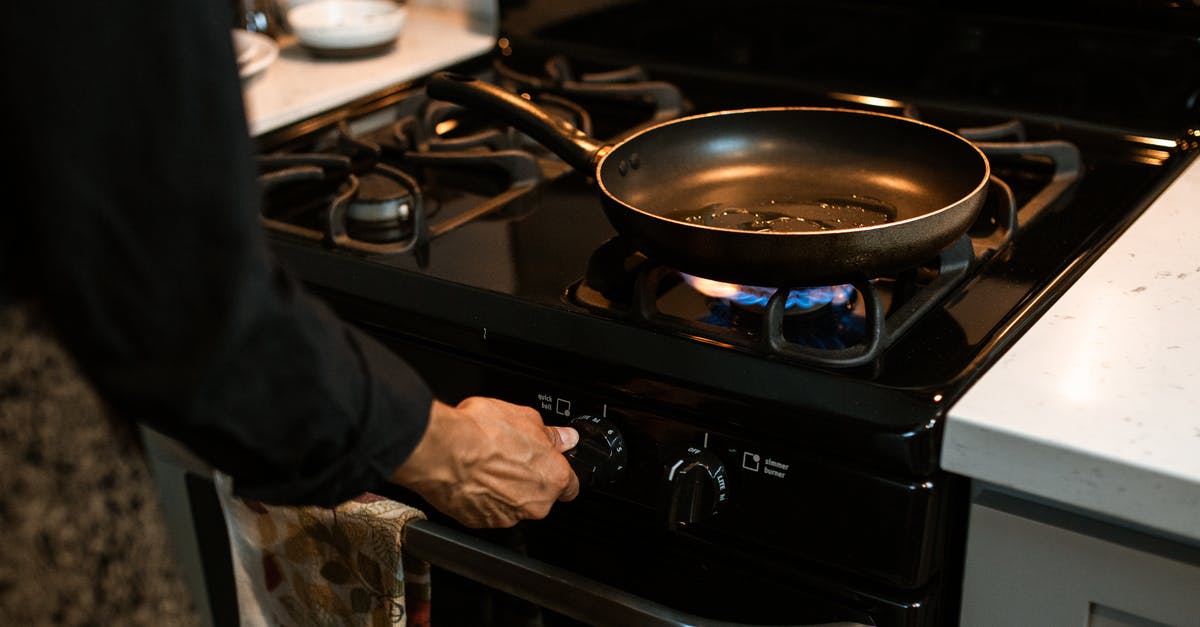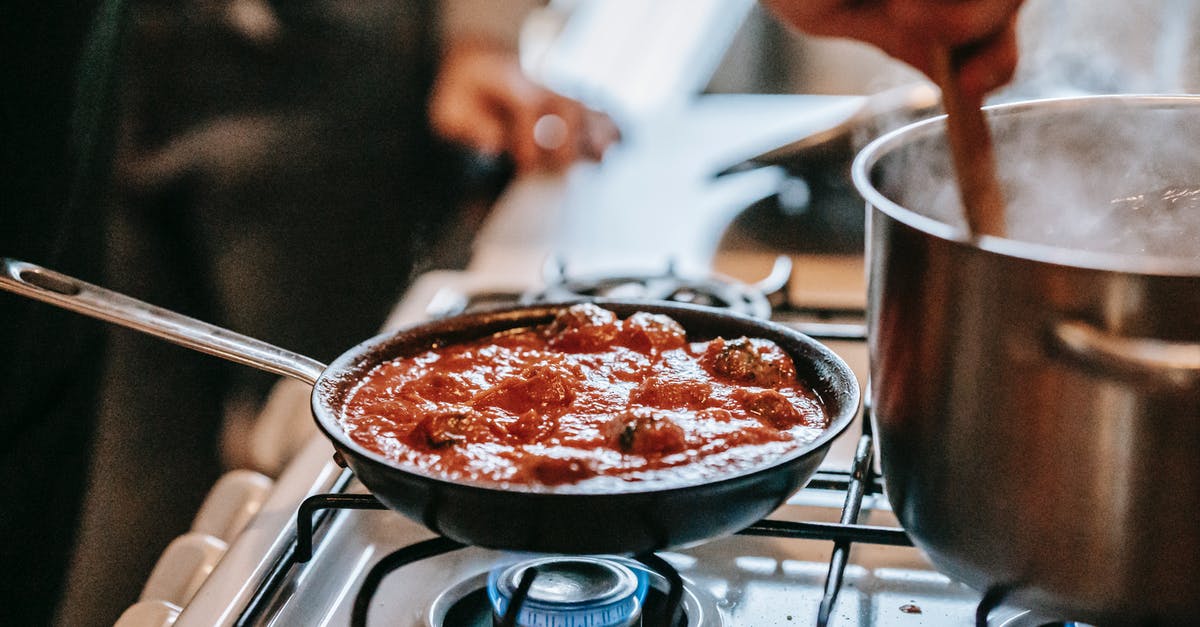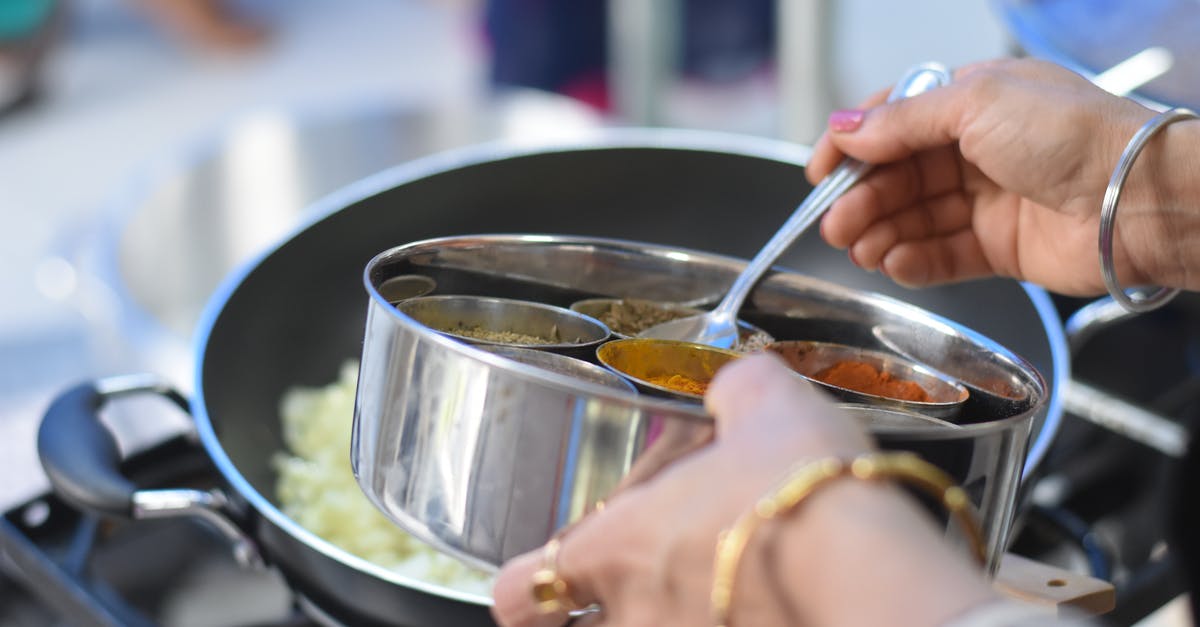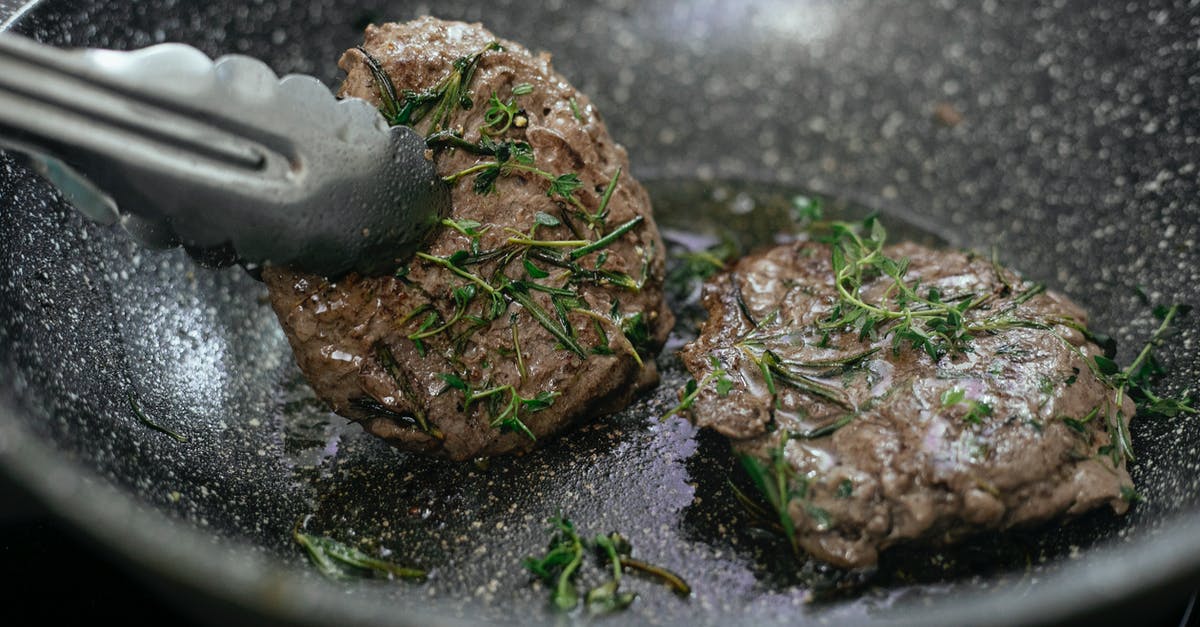Frying pan - Heat Distribution

I have a frying pan and I want to fry 3 sausages.
I want to heat them thoroughly, and want to know the most effective way to distribute
heat when frying multiple items in a single frying pan.
Do I put them together, or do I spread them out across the pan?
What is the most effective way to heat multiple items, and why?
Best Answer
Summary: Loosely, so the food doesn't steam.
Heat distribution
As your question implies, the heat distribution through a quality pan is not perfectly even. It will be hottest directly over the hot spots of the flame or element.
Still, if your pan is well matched in size to the burner or heating element, and is of reasonable quality, that effect will be minimized, especially if you preheat the pan sufficiently long. Even a poor a relatively poor heat conductor like cast iron will begin to heat up across its surface if given more time.
In practice, the heat distribution qualities of the pan are not something you worry about.
Coupling
In order to fry your food, the heat must conduct from the pan into the food item. Air gaps, and water do not help very much with this.
Fat is used in frying, not just for the flavor that it imparts, but to provide a heat conductive coupling between the hot pan and the food item. The heat is actually transferred to the oil or fat which is direct contact with the pan, and then from their into the food item.
Therefore, you need a reasonable amount of fat, to prevent their being air gaps between the food and the pan.
Fat is preferable to water, because although it has a lower specific heat, it can be heated to temperatures above the boiling point of water, which is one of the key elements in a good fry.
Steaming
As is well known, water evaporates at 212 F / 100 C. It actually requires considerably more energy to launch a single water molecule into the air as steam than it does to get it up to the boiling point in the first place (this is called the enthalpy of evaporation).
Because of this effect, whenever food is steaming and giving off water, any excess energy above that needed to bring it to the boiling point goes into the ethalpy, vaporizing the water, and not into further increasing the temperature.
Therefore, you want your food to be as reasonably dry as possible. If left packed together, the moist steam will surround the food, preventing it from getting as crispy and brown as desired. Instead, fried foods should have a certain amount of gap, to allow the steam to escape into the general kitchen air, and to more rapidly allow the food to desiccate to the point where its temperature can rise above the boiling point, facilitating browning reactions which create flavor.
This is the controlling factor in how tightly food should be packed into the pan.
So the three example sausages should be distributed at least an inch or so (a couple of cm) from each other, if there is enough room, although this is not something you should use a ruler on, or obsess about in any case.
Overall, frying transfers energy to the food very quickly, and with basic good technique, you should get excellent results:
- Pre-heat your pan (unless it is PTFE coated non-stick) long enough for it to get to temperature
- Add enough fat to come up to at least the bottom of the food, depending on what type of frying you are doing
- Don't crowd the pan with food items
- Relax and enjoy; there is a lot of margin for error generally. In fact the greatest danger is burning or scorching the food, so be patient.
Pictures about "Frying pan - Heat Distribution"



Quick Answer about "Frying pan - Heat Distribution"
Cookware that distributes heat effectively will cook more evenly, with fewer hot spots. A hot spot occurs when the heat applied to the bottom of the pan isn't properly distributed throughout the material, causing the area of the cooking surface directly above the heat source to be much hotter than the areas around it.How is heat distributed on a frying pan?
Fat is used in frying, not just for the flavor that it imparts, but to provide a heat conductive coupling between the hot pan and the food item. The heat is actually transferred to the oil or fat which is direct contact with the pan, and then from their into the food item.What is the heat of a frying pan?
For the more precise home cook, you can roughly mark what the different pan temperatures are: Low heat is 200\xb0 F to 300\xb0 F - for slow cooking and smoking. Medium heat is 300 \xb0 F to 400 \xb0F - for cooking chicken, vegetables, omelettes and pancakes, steaks or oil frying. High heat is 400\xb0 F to 600\xb0 F for searing meat.Where is the hottest part of a pan?
Your oven is hottest around its periphery: sides, bottom, and top. The closer you get to those metal walls, the hotter the air. Thus anything baked towards the periphery will bake and brown more quickly than anything baked in the center of the oven.What type of pan heats the most evenly?
Aluminum is an excellent conductor of heat. It takes less time to heat to your desired temperature and distributes heat more evenly than stainless steel. More even heat distribution means more evenly cooked food, making aluminum cookware the most popular choice among restaurants.Diamond Frying Pan - Heat Distribution
Sources: Stack Exchange - This article follows the attribution requirements of Stack Exchange and is licensed under CC BY-SA 3.0.
Images: RODNAE Productions, Gary Barnes, Gagan Cambow, Katerina Holmes
